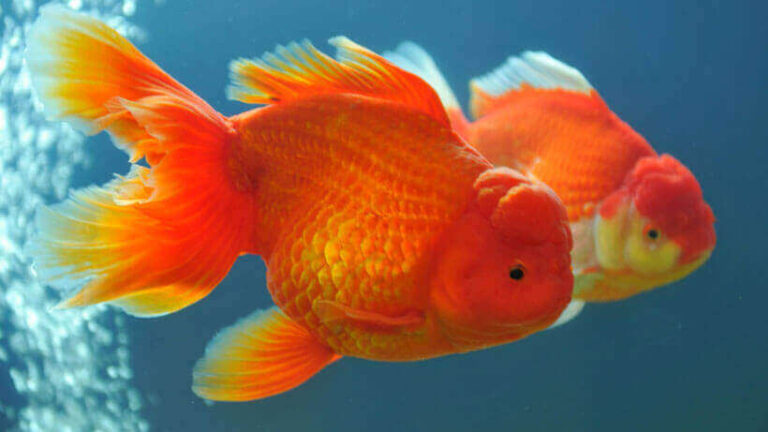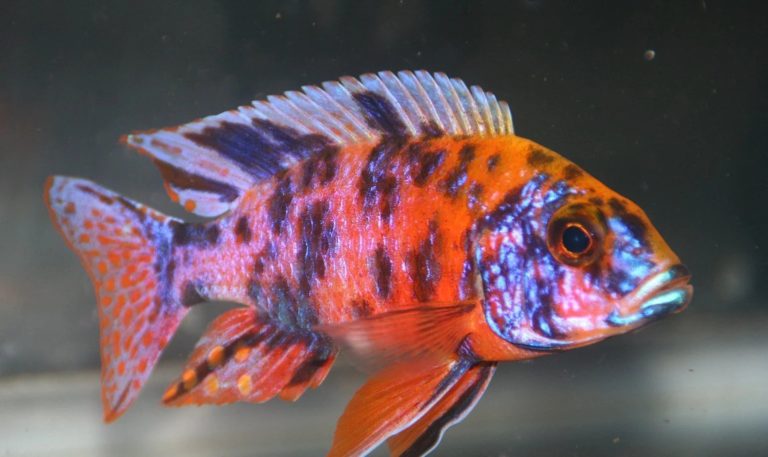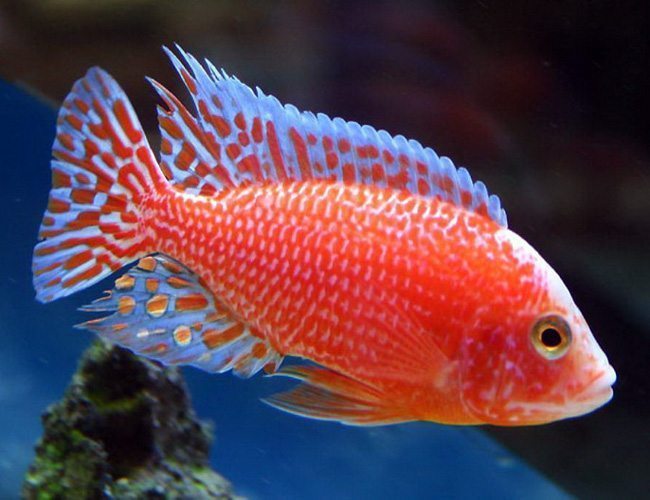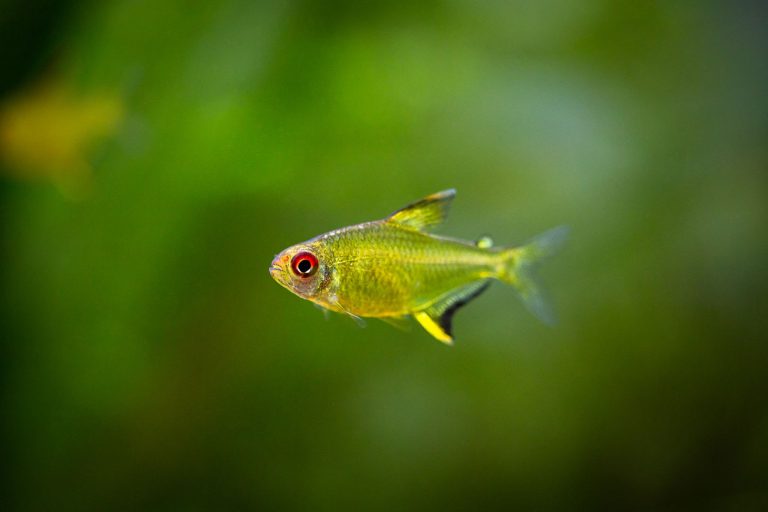Cardinal Tetra
Cardinal Tetras are small, colorful, and peaceful fish that are popular among aquarium enthusiasts. Proper care and a suitable environment are essential for their well-being. Below are some key considerations for Cardinal Tetra care, including tank mates, size, lifespan, and more.
Cardinal Tetra Fish Species Summary:
| Scientific Name: | Paracheirodon axelrodi |
| Origin: | Freshwater rivers of South America |
| Diet: | Omnivore (feeds on both plant and animal-based foods) |
| Behavior: | Peaceful |
| Behavior Towards Their Own Species: | Social and prefers to be in groups |
| Swimming Zone: | Middle |
| Water Temperature: | 23 – 27 °C |
| Water Hardness: | up to 10 GH |
| pH Level: | 5.5 – 7.0 |
| Minimum Aquarium Volume: | 75 Liters (for a group of 6-10 individuals) |
| Adult Size: | 4 – 5 cm |
| Reproduction: | They lay eggs but breeding is challenging and requires specific conditions |
| Lifespan: | Up to 5 years (with proper care) |
| Care: | Moderate, requires a well-maintained aquarium, a balanced diet, and regular monitoring of water parameters. |
Tank Size:
Cardinal Tetras, though small in size, are very active swimmers and enjoy the company of their own kind. They prefer to be in groups, which is why it is recommended to have a minimum of a 20-gallon tank for a small group of 6-10 Cardinal Tetras. This size allows them to swim freely and exhibit natural behaviors. A larger tank is always better as it not only provides more swimming space but also helps in maintaining stable water parameters. More water volume means that toxins such as ammonia, nitrites, and nitrates will be diluted, making it easier to manage and maintain the water quality.
Water Parameters:
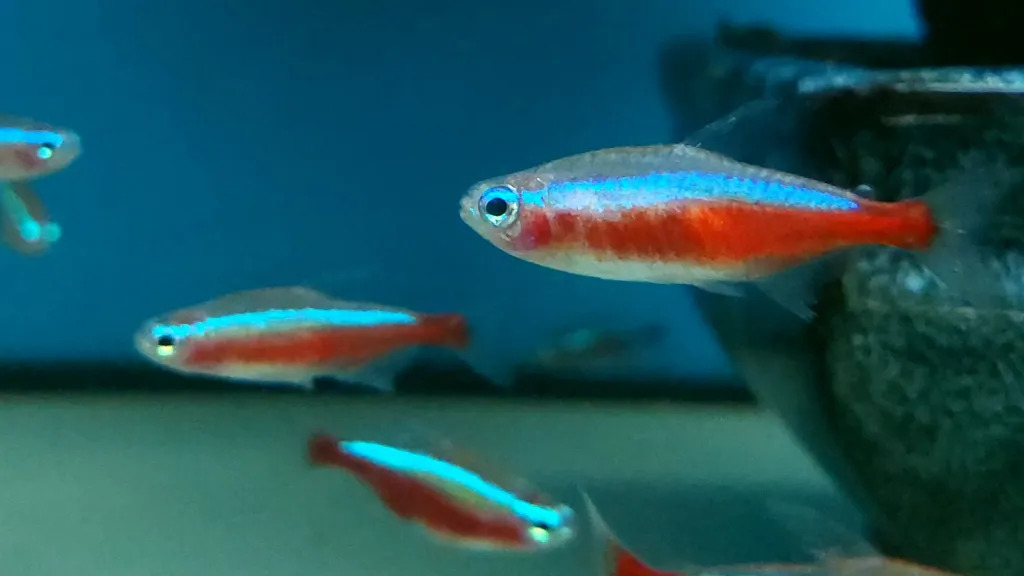
Cardinal Tetras are native to the Amazon River basin, which means they thrive in conditions similar to their natural habitat – warm, soft, and slightly acidic water.
- Temperature: The ideal temperature range for Cardinal Tetras is between 73-81°F (23-27°C). Consistent temperatures within this range are essential as sudden fluctuations can cause stress to the fish, leading to weakened immune systems and increased susceptibility to diseases.
- pH: The pH level of the water should be slightly acidic, ideally between 5.5 and 7.0. This range is closest to the pH levels found in their natural habitats.
- Hardness: The water hardness should be up to 10 dGH. Soft water is preferred as it closely mimics the water conditions found in the Amazon River basin.
Maintaining stable water parameters is crucial for the health and well-being of Cardinal Tetras. Regular testing of the water for pH, hardness, ammonia, nitrites, and nitrates is necessary to ensure the fish are living in optimal conditions. Any sudden changes in these parameters can lead to stress and health issues for the fish, so it is essential to monitor the water regularly and make adjustments as necessary.
Additionally, a well-filtered aquarium with a gentle flow of water is recommended. A filter with biological and mechanical media will help maintain the water quality by removing waste and promoting beneficial bacteria growth. Regular water changes, typically 25-30% every two weeks, are also essential to keep the water clean and the fish healthy.
Tank Setup:
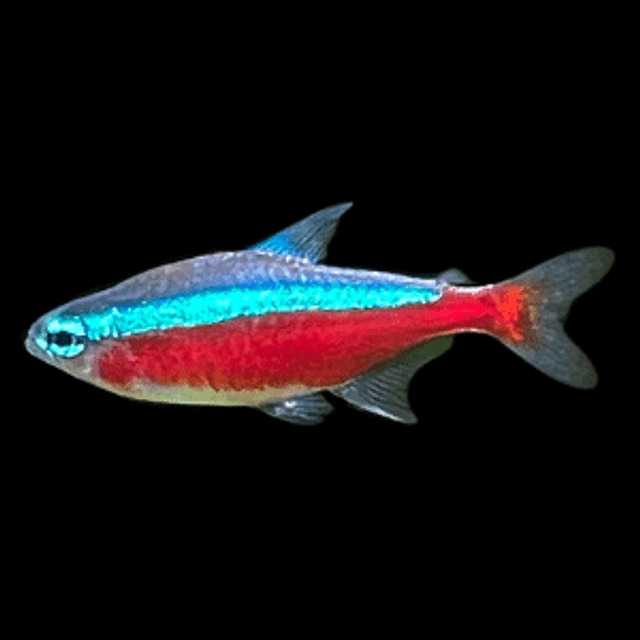
- Substrate: The substrate forms the bottom layer of the aquarium and plays a vital role in the overall health and well-being of the fish. Fine sand or small, smooth gravel is suitable for the bottom of the tank. These substrates are similar to the natural riverbeds that Cardinal Tetras are accustomed to in the wild. Additionally, it’s essential to choose a substrate that won’t scratch or harm the fish as they swim close to the bottom.
- Plants: Live plants are highly recommended for a Cardinal Tetra tank. They provide natural hiding spots and contribute to maintaining water quality by absorbing excess nutrients and releasing oxygen. Additionally, live plants help in creating a natural and comfortable environment for the fish. Good plant choices include Java Moss, Amazon Sword, and Water Wisteria, as these plants are not only attractive but also easy to care for.
- Lighting: Cardinal Tetras naturally inhabit areas with dense vegetation and canopy cover, which means they are used to dimmer, filtered light. Therefore, moderate lighting is ideal for them. Avoid overly bright lights as it can cause stress to the fish. LED lights with adjustable intensity are a good choice, as they can be dimmed to the desired level and do not produce much heat.
- Filtration: A good quality filter is essential for maintaining clean and healthy water in the aquarium. The filter should provide efficient biological and mechanical filtration. Biological filtration is the process of beneficial bacteria breaking down harmful substances like ammonia and nitrites into less toxic nitrates. Mechanical filtration, on the other hand, involves the physical removal of debris and particles from the water. An external canister filter or a hang-on-back filter are good options for a Cardinal Tetra tank. These filters usually have multiple compartments for different media types, ensuring thorough filtration and clean water.
In addition to the above, it’s also important to add some decorations and hiding spots such as driftwood and rocks. These will not only add aesthetic value to the aquarium but also provide the Cardinal Tetras with spaces to hide and feel secure. Remember, a well-decorated and planted tank will help mimic their natural environment, which is key to keeping Cardinal Tetras healthy and stress-free.
Diet:
Cardinal Tetras are omnivorous, which means they consume both plant and animal-based foods. Providing a well-balanced diet is crucial for their overall health, vitality, and coloration. Here’s a more detailed guide on their diet:
- Flake Food: High-quality tropical fish flakes should be the primary component of their diet. These flakes are specially formulated to provide the necessary nutrients needed by tropical fish. Ensure that the flakes are fresh and not expired, as the nutritional value of flake food decreases over time.
- Live/Frozen Foods: While flake food should be the staple of their diet, it is essential to supplement their diet with live or frozen foods like brine shrimp, daphnia, and bloodworms. These foods are not only high in protein but also help to stimulate their natural hunting instincts. Feeding live or frozen foods 2-3 times a week is sufficient.
- Vegetables: Occasionally offering small pieces of blanched vegetables like spinach or zucchini is also beneficial. These vegetables provide essential vitamins and minerals and add variety to their diet. Make sure to chop the vegetables into small enough pieces that can be easily consumed by the fish.
Variety is the key to a balanced diet. Therefore, it’s essential to rotate the food and not feed the same thing every day. Feeding a variety of foods will ensure that the Cardinal Tetras receive all the necessary nutrients they need to stay healthy and vibrant.
Also, it is essential to avoid overfeeding. Cardinal Tetras have small stomachs, and it is easy to overfeed them. It is advisable to feed them small amounts of food 2-3 times a day. The food should be consumed within a few minutes. If there is any uneaten food after 5 minutes, it is recommended to remove it from the tank to avoid water pollution.
Lastly, remember to always observe the fish while feeding. This is not only a great way to bond with the fish but also an opportunity to check for any signs of illness or distress.
Tank Mates:
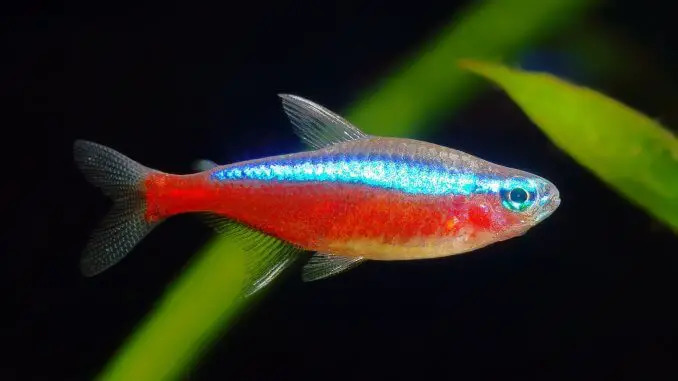
Cardinal Tetras are known for their peaceful and sociable nature, making them excellent inhabitants for a community tank, provided they are kept with other non-aggressive fish of a similar size.
Suitable tank mates include Neon Tetras, Harlequin Rasboras, Corydoras Catfish, Guppies, and small peaceful Characins. These species are compatible with Cardinal Tetras as they share similar water requirements and have a non-aggressive temperament.
It is advisable to avoid keeping Cardinal Tetras with large, aggressive, or predatory fish like Cichlids or Arowanas. These types of fish can pose a threat to Cardinal Tetras due to their size and predatory nature.
Schooling:
Cardinal Tetras are schooling fish, which means they prefer to be in groups. This natural behavior is essential for their well-being as it helps reduce stress and provides a sense of security. It is recommended to keep a minimum of 6-10 Cardinal Tetras together in an aquarium. A larger school is always better as it not only helps reduce stress among the fish but also makes them feel more secure and comfortable in their environment.
When Cardinal Tetras are kept in a larger group, they exhibit more natural behaviors and tend to be more active and vibrant. Moreover, a larger school of Cardinal Tetras creates a stunning visual display in the aquarium as they swim together in a coordinated manner.
In conclusion, Cardinal Tetras thrive in a community tank with other small, peaceful fish, and it is essential to keep them in a school of at least 6-10 individuals to ensure their well-being and happiness.
Lifespan:
Cardinal Tetras can live a relatively long life for a small fish, provided they are given proper care and a suitable environment. With appropriate care, which includes maintaining stable water parameters, providing a balanced diet, and keeping them in a stress-free environment, Cardinal Tetras can live up to 5 years or more.
It is essential to understand that the lifespan of Cardinal Tetras, like other fish, is influenced by several factors, including genetics, diet, water quality, and overall care. Therefore, while it is possible for Cardinal Tetras to live up to 5 years or more, their lifespan can be significantly reduced if they are not provided with the proper care and environment.
To maximize the lifespan of Cardinal Tetras, it is crucial to provide them with a well-maintained aquarium, a balanced diet, and to regularly monitor the water parameters to ensure they are within the recommended ranges. Additionally, keeping them in a larger school and providing them with plenty of hiding spots can help reduce stress and contribute to their overall well-being and longevity.
Breeding:
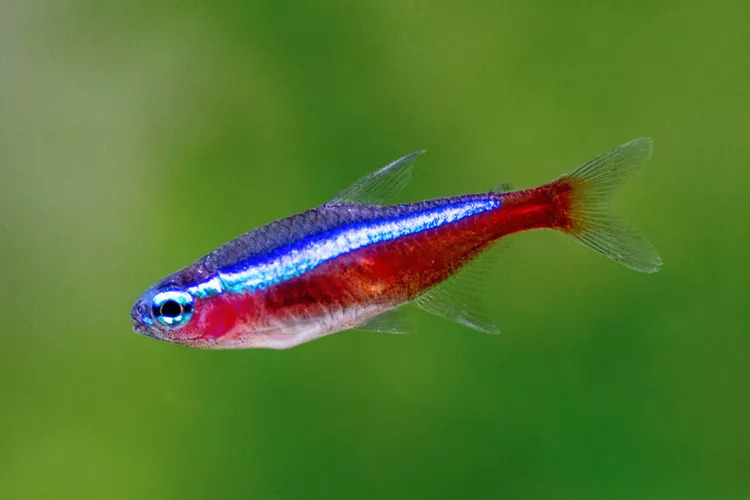
Breeding Cardinal Tetras can be a complex task that requires a deep understanding of their specific needs, and as such, it’s generally not recommended for beginners. Cardinal Tetras require particular water conditions that mimic their natural breeding environment in the wild. These conditions include softer and more acidic water, dim lighting, and a quieter setting.
- Water Parameters for Breeding: For successful breeding, Cardinal Tetras need very specific water conditions. The pH should be at the lower end of their natural range, ideally between 5.0 and 6.0, and the water hardness should be lower than what is generally recommended for keeping them, often around 1-2 dGH. The temperature should be kept stable at the higher end of their comfort zone, around 80°F (27°C).
- Breeding Tank Setup: A separate breeding tank is generally recommended, as it allows better control over the environment and reduces disturbances from other tank mates. This tank should be dimly lit and contain plenty of live plants to provide cover for the female to lay her eggs and for the fry to hide after hatching. Floating plants can provide additional cover and darken the environment, which is beneficial for breeding.
- Spawning and Fry Care: Once the breeding conditions are set, females will lay their eggs, which are usually scattered among plants. Once the eggs are fertilized, it’s crucial to remove adult fish to prevent them from eating the eggs and the fry. The eggs will hatch in a couple of days, producing very small and delicate fry that will require specialized care.
- Feeding Fry: Newly hatched fry are tiny and will need to be fed infusoria or liquid fry food for the first few weeks of their life. As they grow, they can be transitioned to newly hatched brine shrimp and eventually to finely crushed flake food.
- Maintaining a Healthy Environment: Regular water changes, proper filtration, and a balanced diet are not only key to keeping your Cardinal Tetras healthy and happy but also vital when trying to breed them. Keeping the water parameters stable and providing a clean environment will maximize your chances of successfully breeding Cardinal Tetras.
In conclusion, breeding Cardinal Tetras is an involved process that requires meticulous care, specific water conditions, and special attention to the needs of both the adults and the fry. With patience, attention to detail, and the proper setup, however, it can be a rewarding experience for those who are up for the challenge.

